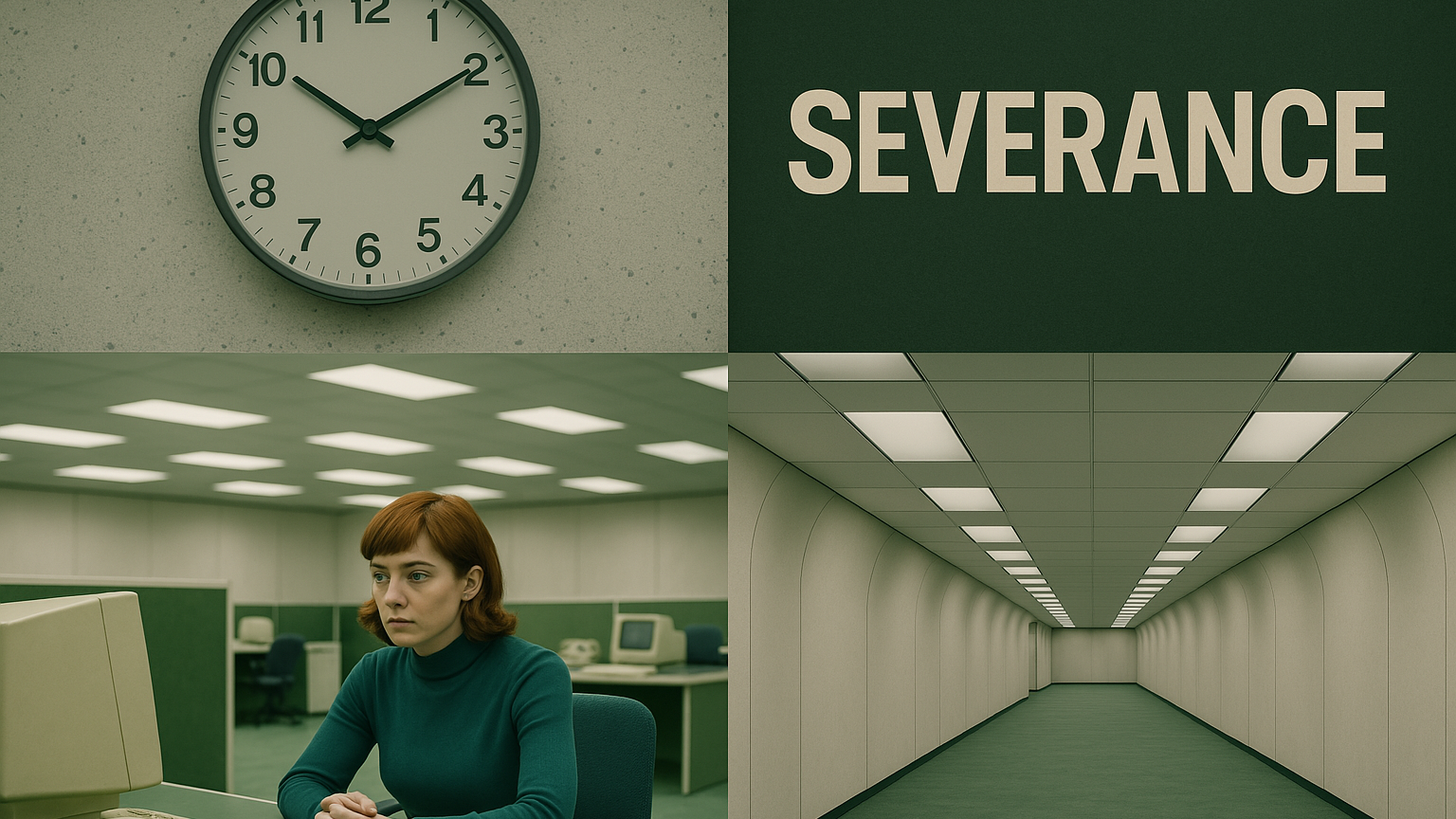
The Visual Language of Severance: Cinematography and Design
Severance has earned widespread acclaim for its distinctive visual storytelling, which relies on meticulous composition, color theory, and production design to reinforce its themes of duality and confinement. The show's visual language is as carefully constructed as its narrative, with every frame serving the psychological experience of its characters.
Contrasting Worlds Through Color and Composition
The series establishes a clear visual dichotomy between the "innie" and "outie" worlds. Inside Lumon Industries, cinematographer Jessica Lee Gagné employs a clinical, high-key lighting scheme with a cool color palette dominated by whites, teals, and pale blues. This creates an almost antiseptic environment that feels simultaneously sterile, timeless, and vaguely threatening. The fluorescent lighting casts an artificial glow that subtly drains the humanity from the space.
In contrast, the outside world is shot with a warmer palette but is often desaturated and gloomy, reflecting Mark's grief-stricken perspective. Winter persists throughout the exterior scenes, with snow-covered landscapes creating visual emptiness that mirrors the emotional void in Mark's outie existence. The harsh weather also serves to make Lumon's climate-controlled environment seem both comforting and unnaturally isolated from natural cycles.
Symmetry and Power
Director Ben Stiller and his team employ rigorous symmetrical compositions throughout the series, particularly in the Lumon scenes. Corridors stretch into perfect one-point perspective, characters are frequently centered in frame, and architectural elements create frames within frames. This symmetry evokes the work of filmmakers like Stanley Kubrick and Wes Anderson but serves a thematic purpose: it visualizes the rigid control Lumon exerts over its employees.
When this symmetry is broken, it signals moments of disruption or rebellion. As characters begin to question their environment, the visual language subtly shifts—camera movements become more dynamic, compositions grow slightly askew, and handheld shots introduce an element of instability to previously ordered spaces.
Spatial Storytelling
The physical geography of Lumon becomes a character in itself. The endless white corridors create a labyrinthine quality, with employees (and viewers) never gaining a complete understanding of the building's layout. This spatial disorientation reinforces the workers' limited knowledge and controlled movements.
The MDR department—with its four desks arranged in a cluster—creates a fishbowl effect, allowing for constant observation while forcing interaction between the team members. The break room, despite its name, is claustrophobic and intimidating, with minimal furniture and prominent use of negative space that makes the occupant feel exposed and vulnerable.
Visual Motifs and Symbolism
The show employs recurring visual motifs that enhance its themes. Screens and monitors appear frequently, from the MDR terminals to security cameras, suggesting constant surveillance. Glass partitions and windows create transparent barriers, symbolizing the psychological walls between different aspects of the characters' identities.
Perhaps most notably, the show frequently uses elevators as transition points between the severed and unsevered states. These vertical journeys are filmed to emphasize disorientation and transformation, with the camera sometimes inverting or using unusual angles to signal the shift between consciousnesses.
Retro-Futuristic Design Elements
The production design incorporates anachronistic elements that create a sense of timelessness. MDR employees use computer terminals that resemble 1980s technology but perform advanced data refinement. This visual disconnection serves multiple purposes: it creates a distinctive aesthetic, reinforces the department's isolation from technological progress, and hints that Lumon may have been conducting severance procedures for decades.
Miniatures and Scale
The opening credits sequence, featuring a miniature Mark falling through spaces that shift between his apartment and office, establishes the show's interest in manipulating scale and perspective. This technique returns in the way certain spaces at Lumon—particularly executive offices and the perpetuity wing—are filmed to feel cavernous and intimidating, dwarfing the employees who occupy them.
Through these deliberate visual choices, Severance creates a world that feels both recognizable and eerily off-kilter. The show's cinematography doesn't merely capture the action—it actively communicates the psychological experience of severance, allowing viewers to feel the disorientation, restriction, and uncanny quality of living a literally divided life.